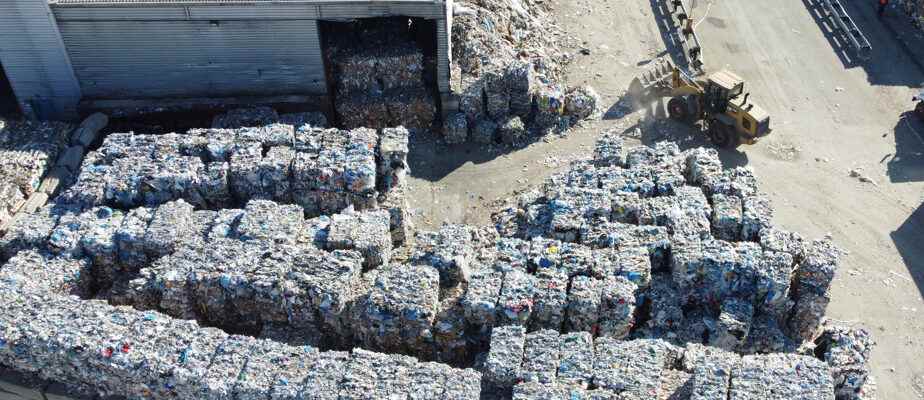Towns in the suburbs of Montreal will soon have to imitate the metropolis by banning plastic grocery bags, generalizing the collection of compost and limiting the distribution of Publisac.
Posted at 4:04 p.m.
Updated at 4:47 p.m.
At least that is what the Montreal Metropolitan Community (CMM) is planning in a proposal that will be the subject of a consultation in the coming months. The CMM brings together the 82 cities of Greater Montreal.
The document also provides for a ban on weekly garbage collection by 2027 across the region to encourage its 4 million residents to recycle and compost more. A limit of 26 trips per year for the garbage truck would be set.
The dumps currently used by the region are filling up at breakneck speed. The only solution, according to the CMM: significantly reduce (-10%) the quantity of waste produced by each resident of the metropolitan region. In total, Greater Montreal throws away 5 million tons of material each year.
“Landfill sites will reach their maximum capacity within ten years,” said Mayor Valérie Plante, who chairs the CMM, in a press release. We must take strong and ambitious measures to promote reduction at source and reuse, and thus achieve zero landfill. »
Half of Greater Montreal’s waste is buried at the Enviro Connexion Complex in Terrebonne, which should be full in 2029. The other dumps are all located outside the region, notably in Sainte-Sophie-des-Laurentides and Saint- Thomas de Joliette.
The CMM’s proposal will be the subject of public consultations in 2023. If approved, at the end of 2023 or the beginning of 2024, each municipality will have to adopt a by-law to transpose these rules on its territory.
“We have a big challenge”
Émilie Charbonneau, environment team leader for the CMM, participated in the drafting of this draft Metropolitan Residual Materials Management Plan.
In a telephone interview, she pointed out that barely half of Greater Montreal residents’ garbage is buried in the region. In addition to measures to reduce the quantity of waste produced at the source, the mayors of the CMM will also have to start thinking about the possibility of opening a new dump, if possible within the limits of Greater Montreal.
“We realize that we have a big challenge with regard to our ultimate residues. On the one hand, we want to reduce them. On the other hand, it will take us a solution,” she said.
The document that will be the subject of consultation in the coming months also shows that the CMM is failing or is in the process of failing several of the objectives of its latest Metropolitan Plan for the Management of Residual Materials.
In 2020, 50% of recyclable materials were recycled (target 70% in 2018), a figure that drops to 29% for construction debris (target 70% in 2020). Residents of Greater Montreal also produce many more tons of waste than desired (758 kilos/person, against a target of 600 kilos/person in 2020).
“A lot of effort to put in”
Karel Ménard, of the Quebec Common Front for Ecological Waste Management, is not disheartened by these results.
“There is still a lot of effort to be made,” he admitted in a telephone interview. What pleases me is that the City of Montreal and for the CMM, the solution no longer involves only recycling, but above all reduction at source. »
The ecologist welcomes the idea of extending to the whole of Greater Montreal the measures already applied in the metropolis with regard to the Publisac and plastic bags. “It’s a great decision,” he said. As the proposals come from the cities themselves, it has a good chance of being adopted, according to him.
But the best news of the CMM plan, affirmed Karel Ménard, is the will to think about the establishment of one (or several) dumps within the limits of its own territory. If Montreal managed its waste itself, the much higher landfill costs would force cities and businesses to think about real solutions to massively divert garbage from the dump. “We got there. We can no longer do like 10, 20, 30, 40 years ago,” he said.

